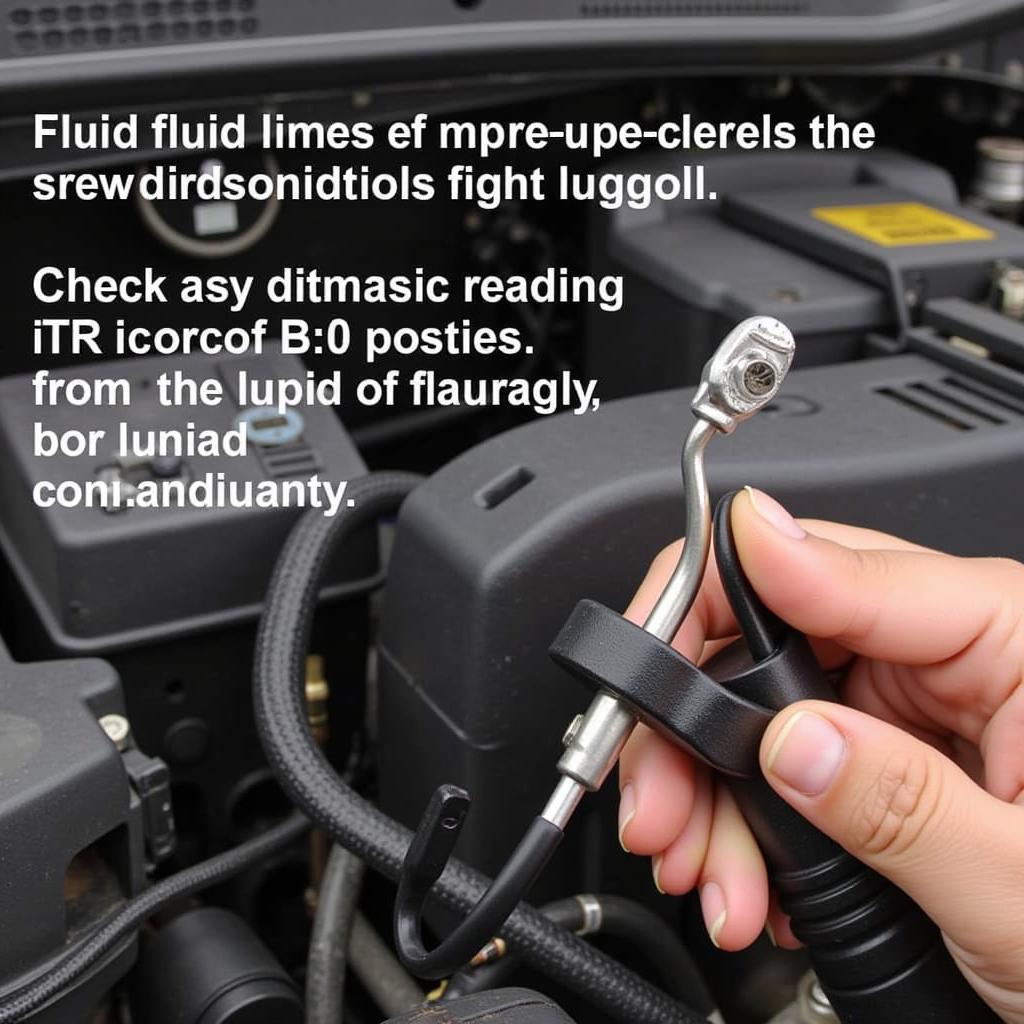Diagnosing a car transmission problem can be tricky, but with a systematic approach, you can often pinpoint the issue. This article will guide you through the process of identifying common transmission problems, from subtle signs to more obvious symptoms. We’ll explore how to differentiate between simple fixes and more serious issues that require professional attention.
diagnose car transmission problems
Understanding the Basics of Car Transmissions
Before diving into diagnostics, it’s helpful to understand the basics of how a car transmission works. The transmission is responsible for transferring power from the engine to the wheels, allowing the car to change speeds and maintain optimal performance. There are two main types of transmissions: automatic and manual. Each has its own set of potential problems.
Common Symptoms of Transmission Problems
Recognizing the symptoms of a failing transmission is the first step towards How To Diagnose A Car Transmission Problem. These can range from subtle changes in performance to more noticeable issues. Some common signs include:
- Slipping Gears: This feels like the engine is revving up but the car isn’t accelerating as it should.
- Rough Shifting: You might experience difficulty shifting gears or a grinding sensation when changing gears.
- Delayed Engagement: After shifting into gear, there might be a delay before the car actually starts moving.
- Transmission Fluid Leaks: Check for red or brown fluid under your car.
- Burning Smell: A burning smell could indicate overheating transmission fluid.
- Strange Noises: Whining, humming, or clunking noises coming from the transmission area can signal a problem.
How to Diagnose a Car Transmission Problem: A Step-by-Step Guide
- Check the Transmission Fluid: Ensure the fluid is at the correct level and doesn’t smell burnt. Low or burnt fluid can cause various problems.
- Inspect for Leaks: Look for leaks around the transmission pan, seals, and lines.
- Listen for Unusual Noises: Pay attention to any whining, humming, or clunking sounds coming from the transmission.
- Test Drive the Car: Focus on how the car shifts, accelerates, and decelerates. Note any slipping, hesitation, or rough shifting.
- Use a car problem diagnosis device: A diagnostic tool can read trouble codes stored in the car’s computer, providing valuable insights into the problem.
 Checking Transmission Fluid
Checking Transmission Fluid
Car Diagnose Automatic Transmission Problems
Automatic transmissions are complex systems with many components that can fail. Problems can range from faulty solenoids and sensors to issues with the torque converter or valve body. Diagnosing these issues often requires specialized equipment and expertise.
car diagnose automatic transmission problems
“A thorough inspection is key,” says John Miller, a seasoned automotive technician with 20 years of experience. “Don’t jump to conclusions. A simple fluid change can sometimes resolve seemingly complex issues.”
Car Having Acceleration Problems? It Could Be Your Transmission
If your car having acceleration problems, the transmission could be the culprit. A slipping transmission will prevent the engine’s power from reaching the wheels efficiently, resulting in sluggish acceleration.
Smart Car Immobiliser Problem and its Relation to Transmission Diagnostics
While seemingly unrelated, a smart car immobiliser problem can sometimes affect transmission diagnostics. In some cases, an immobiliser issue can prevent the car from starting or engaging the transmission properly, which can be misinterpreted as a transmission problem.
“It’s important to rule out any electrical or electronic issues before focusing on the transmission itself,” adds Sarah Johnson, an automotive electrical systems specialist. “A faulty sensor or wiring problem can mimic transmission symptoms.”
Conclusion
Knowing how to diagnose a car transmission problem is crucial for maintaining your vehicle’s performance and longevity. By understanding the common symptoms and following a systematic diagnostic approach, you can often pinpoint the issue. If you’re unsure about anything, it’s always best to consult a qualified mechanic. Connect with AutoTipPro at +1 (641) 206-8880 or visit our office at 500 N St Mary’s St, San Antonio, TX 78205, United States for expert assistance with your car transmission problems.




Leave a Reply